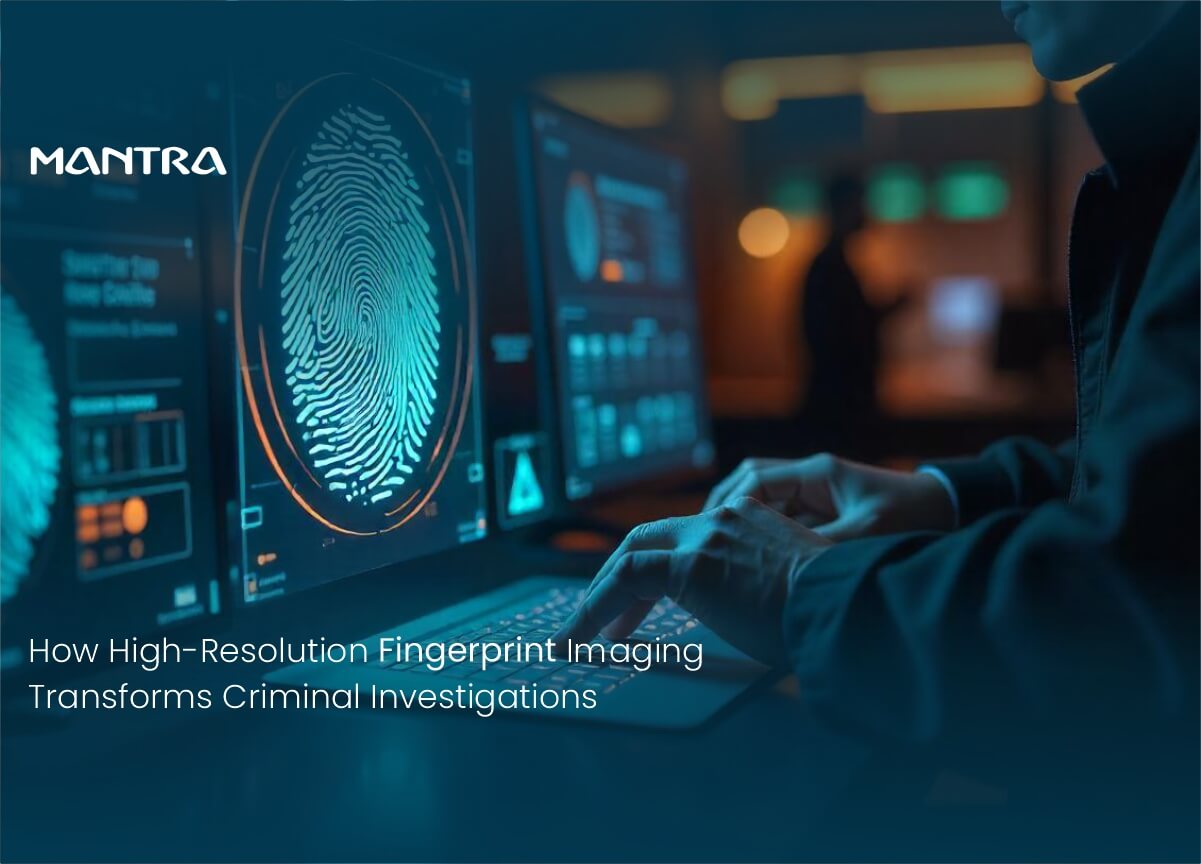
Advanced fingerprint scanners with ultra-high resolution (up to 1950 PPI) give law enforcement unmatched access to third-level ridge and pore details-enabling faster suspect identification, stronger evidence, and a major leap forward in modern forensics.
The Shift from Traditional Prints to Micro-Level Precision
Fingerprint analysis has long been a foundational tool in law enforcement. Traditionally, two levels of ridge detail were used:
Level 1:
General fingerprint patterns-arches, loops, whorls-help classify prints.
Level 2:
Minutiae points like ridge endings and bifurcations offer deeper identification.
These two layers alone have helped solve countless crimes. But now, with high-resolution biometric imaging, a third layer of analysis is unlocking evidence previously invisible to the naked eye.
Level 3 Fingerprint Details: The New Frontier in Identification
Third-level fingerprint data refers to microscopic traits such as:
Pore patterns, sizes, and spacing.
Ridge edge contour and irregularities.
Ridge width variation and texture.
These subtle features dramatically improve the system’s ability to distinguish between similar fingerprints-crucial in complex cases, degraded prints, or when suspects attempt to alter or obscure their identities.
Why High-Resolution Capture Matters
Low-resolution scanners (typically 500–1000 PPI) often miss third-level traits. In contrast, advanced fingerprint devices-like those that offer up to 1950 PPI horizontally and 1350 PPI vertically-capture ultra-fine print details from the beginning, improving match rates and reducing false positives.
Benefits of high-resolution fingerprint capture for law enforcement:
Faster suspect identification in ABIS and criminal databases.
Higher match accuracy from even partial or damaged fingerprints.
Stronger evidence admissibility in court.
Detection of intentional print tampering.
From Patrol to Forensics: Built for Real-World Policing
Today’s high-res tenprint and palm scanners are engineered for both field use and forensic labs. Features like auto-capture, intuitive user guidance (via LED/pictographs), and FBI Appendix F (FAP 60) certification ensure consistent quality-regardless of operator experience or environmental challenges.
Ideal use cases:
On-the-spot identity checks during patrol.
Criminal bookings at police stations.
Digital forensic labs for crime scene evidence.
Border control and national ID validation.
Real-World Impact: From Crime Scenes to Courtrooms
When agencies can rely on precise biometric data, it accelerates investigations. Whether matching suspects from a watchlist or comparing latent prints from evidence, high-res imaging reduces false matches and narrows down suspects faster. Moreover, in courtrooms, this level of biometric proof adds forensic credibility.
Designed for Field and Lab Environments
Today’s rugged, high-resolution fingerprint devices are designed for use in mobile patrol units, forensic labs, and even outdoor crime scenes. With waterproof, dustproof, and tamper-resistant designs, they ensure quality capture in real-world conditions.
Scalable for National ID and Criminal Databases
High-res fingerprint technology also plays a major role in national ID systems, border control, and cross-agency biometric sharing. As governments modernize their law enforcement databases, these enhanced images improve interoperability and long-term data integrity.
Conclusion
As crime tactics evolve, so must the tools used to catch and convict. High-resolution fingerprint imaging isn't just a tech upgrade-it’s a powerful enabler of faster justice, better identification, and stronger trust in biometric evidence.
Comments